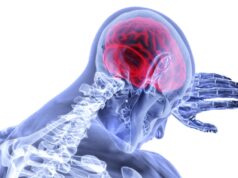Treating stroke patients in specialised ambulances speeds treatment and reduces patients’ disability, according to late-breaking science presented at the International Stroke Conference (ISC; 19–21 February, Los Angeles, USA).

Discussing the Berlin prehospital or usual delivery (B_PROUD) trial, Heinrich J Audebert, Center for Stroke Research at Charité Universitätsmedizin, Berlin, Germany, told delegates: “Sixty per cent of patients assigned to the mobile stroke unit received clot-busting treatment with alteplase if a mobile stroke unit was available, compared to 48% of patients who received conventional treatment in the hospital.”
Further important findings he alluded to included that the time to treatment was shortened by an average of 20 minutes when a mobile stroke unit was dispatched, and the use of a mobile stroke unit reduced the likelihood and severity of disability and death at three months by 26%.
“While we had anticipated better outcomes in the patients treated in the mobile stroke units, we are amazed by the magnitude of the effects,” said Audebert. “It is obvious that clot-busting treatment is most effective if it is applied in the ultra-early phase of stroke—ideally within the first or ‘golden hour’ of symptom onset.”
Since treatment within the first hour of symptom onset happens rarely in conventional care, Audebert urged healthcare providers to consider ways to optimise treatment so it can begin during transportation to the hospital. “Stroke treatment is more effective the earlier it starts,” he said. “Just waiting until the patient arrives at the hospital is not enough anymore.”
The B_PROUD trial investigated if prehospital treatment in a mobile stroke unit could improve patient outcomes compared to usual care, which was emergency transportation in a conventional ambulance and in-hospital treatment.
A total of 749 patients (average age: 73; 46% female) were assigned to treatment based on the availability of three mobile stroke units in the metropolitan area of Berlin, Germany, and compared with patients (n=794, average age: 74; 48% females) who received conventional care.
Audebert explained that mobile stroke units are ambulances staffed with emergency medicine neurologists and equipped with a CT scanner and a lab designed to enable specific stroke treatment at the scene. In the current study, prehospital treatment consisted of administering medications to dissolve the clot blocking blood flow in or to the brain.













